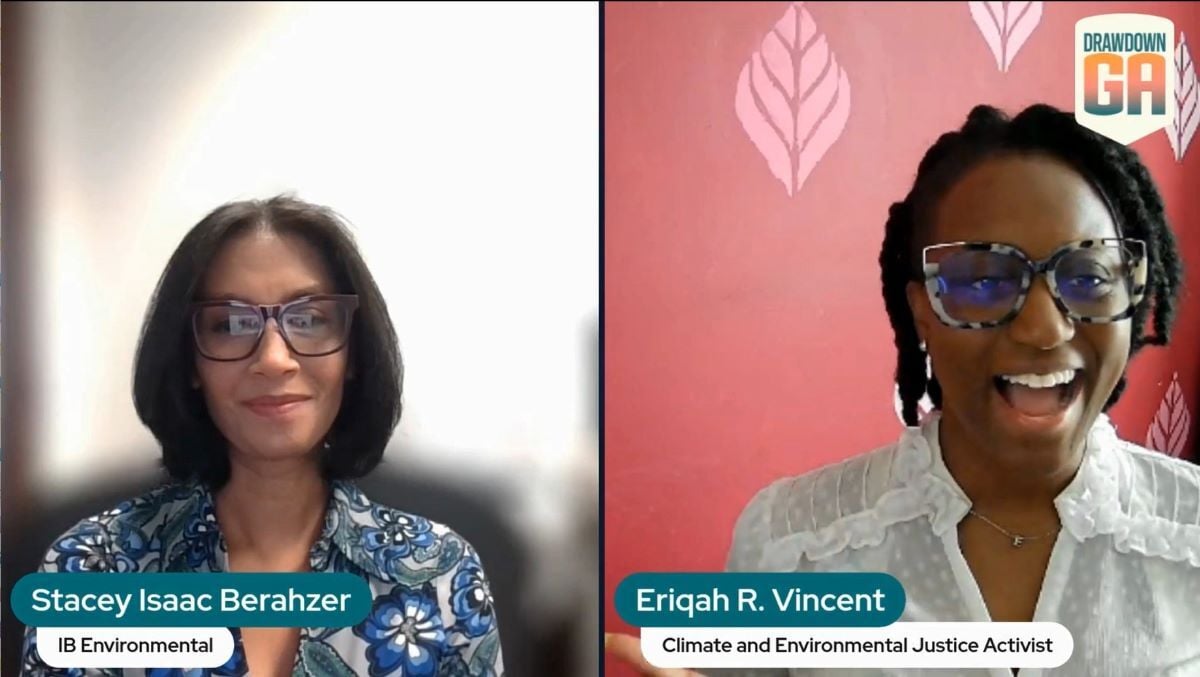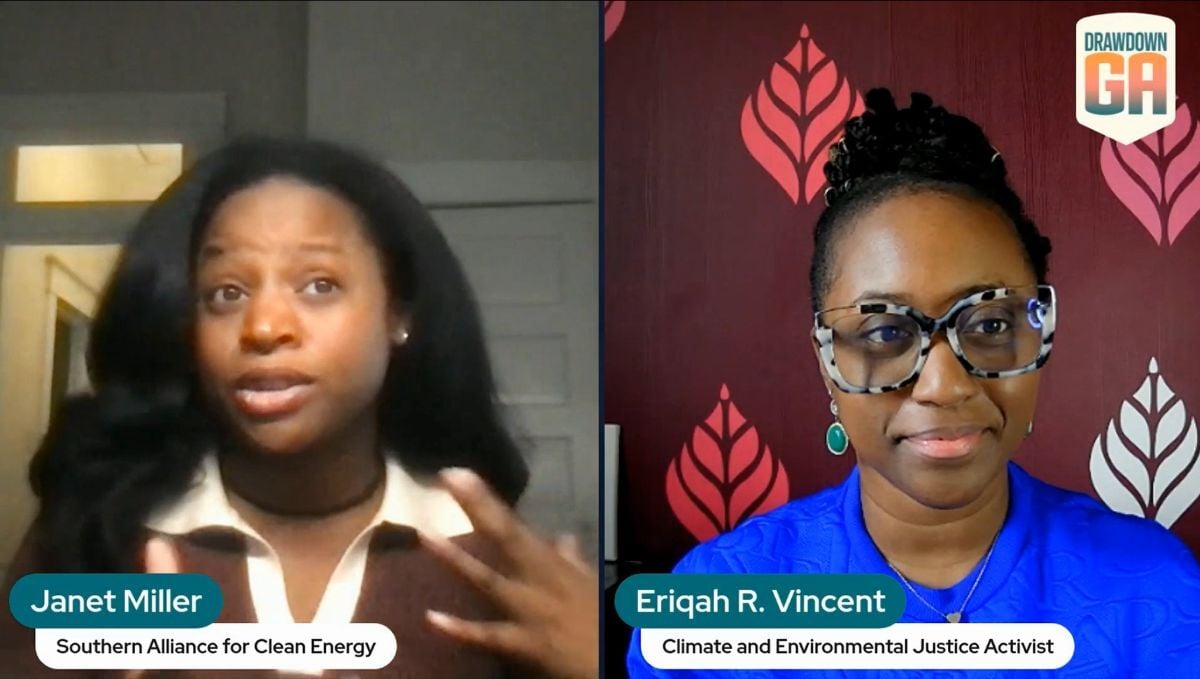When DeKalb County decided to pursue a 100% clean energy future, they didn’t just look for technical solutions—they made a deliberate choice to center community engagement and equity.
In a recent interview for the Georgia Climate Digest video interview series, longtime climate justice advocate Eriqah Vincent sat down with Stacey Isaac Berahzer of IB Environmental to talk about what it really takes to build a climate action plan that works for everyone.
Stacey, whose firm focuses on the intersection of environmental finance policy and equity, played a key role in developing the plan. As she explains in the interview, her path into this work was driven by the realization that environmental change often hinges not on the science, but on funding: “If we can find the money to do robust environmental projects, then they’ll happen.”
Watch the video above to hear the full conversation, or keep reading to learn more about how the team behind the DeKalb County 100% Clean Energy and Clean Transportation Transition Plan worked to center equity and community engagement in this important climate initiative.
Local Small Businesses Lead in Developing the Climate Plan
DeKalb County initiated the process by issuing a request for proposals, signaling their commitment to making a clean energy transition. Southface Institute led the charge and reached out to certified local small businesses, including IB Environmental, to form a collaborative team that also included Energetics and Cherry Street Energy.
Each partner brought their strengths to the table. Stacey described a "divide and conquer" approach: while Southface and IB Environmental focused on local engagement, education, and governance structure, Energetics led the greenhouse gas emissions inventory, and Cherry Street Energy provided an assessment on solar potential.
Community Workshops Meet County Residents Where They Are
Stacey emphasized the importance of authentic engagement with residents, especially in underserved areas. IB Environmental led workshops that helped residents better understand their energy bills and introduced them to assistance programs they might not have known existed. "Some of the folks in the room were senior citizens who had no idea they could qualify for support from Georgia Power or other utilities," she noted.
These sessions weren’t just about education—they were a two-way street. Residents had opportunities to provide feedback on the plan while learning how energy policy impacts their daily lives.
Equity and Data Go Hand-in-Hand
IB Environmental also led the equity analysis for the plan. Stacey and her team identified neighborhoods where residents face disproportionately high energy burdens, or high energy bills compared to household income. "It’s one thing to feel like energy is unaffordable; it’s another to show it with data," she said. That data-driven approach helped guide not only where workshops were held, but where the county should focus future investments.

In addition to their own analysis, IB Environmental connected the emissions inventory team with resources like the Greenhouse Gas Emissions Tracker and members of the Drawdown Georgia research team. “Why reinvent the wheel?” Stacey asked. “Drawdown Georgia had already been pulling together a lot of the information we needed.”
Setting Goals and Sustaining Momentum
The DeKalb County 100% Clean Energy and Clean Transportation Transition Plan was officially adopted on Earth Day 2025 and sets a 2030 goal for achieving many of its clean energy objectives. But Stacey made clear that hitting that target will require more than just good intentions. "We need governance structures in place so these goals don’t just sit on a shelf," she explained.
One recommendation already being implemented is the creation of a citizen cohort called the Community Climate Champions. This group will help keep the county accountable and ensure that community voices continue to shape implementation.
What Success Looks Like
For Stacey and IB Environmental, success means more than just hitting emissions targets. It means reducing the energy burden for low-income households, connecting residents with efficiency and assistance programs, and ensuring that clean energy benefits—including rooftop solar—are accessible to all. “We don’t want a future where only wealthier folks can install solar panels,” she said. “We want solar for all.”
She also highlighted the importance of financial sustainability. While grants and federal dollars are helpful, Stacey believes long-term success will depend on developing viable, sustainable financing models that can stand on their own.
Looking Ahead with Hope
Despite challenges, Stacey remains hopeful. She finds inspiration in young people who are stepping up with fresh ideas and commitment. “They are really invested in this,” she said, citing the City of Atlanta’s Youth Climate Action Fund as one bright example.
She also believes in the power of education and "leapfrog" technologies that can accelerate progress, much like how mobile phones brought connectivity to communities without landlines. "I think we’ll get there,” she said, “because of innovation and a more engaged citizenry.”
Subscribe to Stay Connected
To hear more local climate success stories like Stacey’s, subscribe to the Georgia Climate Digest. You'll receive new interviews, updates on Georgia’s progress on climate solutions, news from Drawdown Georgia, and actionable insights on climate delivered straight to your inbox twice a month.









